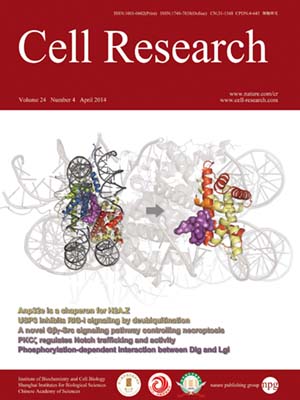
Volume 24, No 4, Apr 2014
ISSN: 1001-0602
EISSN: 1748-7838 2018
impact factor 17.848*
(Clarivate Analytics, 2019)
Volume 24 Issue 4, April 2014: 497-500 | Open Access
LETTERS TO THE EDITOR
Crystal structure and biochemical analysis of the heptameric Lsm1-7 complex
Lijun Zhou1,3,*, Yulin Zhou1,*, Jing Hang2,3, Ruixue Wan2, Guifeng Lu2, Chuangye Yan2,3 and Yigong Shi1,3
1Ministry of Education Key Laboratory of Protein Science, Center for Structural Biology, School of Life Sciences and School of Medicine, Tsinghua University, Beijing 100084, China
2State Key Laboratory of Bio-membrane and Membrane Biotechnology, Center for Structural Biology, School of Life Sciences and School of Medicine, Tsinghua University, Beijing 100084, China
3Tsinghua-Peking Joint Center for Life Sciences, Center for Structural Biology, School of Life Sciences and School of Medicine, Tsinghua University, Beijing 100084, China
Correspondence: Yigong Shi,(shi-lab@tsinghua.edu.cn)
The Lsm (Sm-like) family of proteins, characterized by the Sm fold1 and conserved among eukaryotes, plays an important role in RNA biogenesis. The Sm and Lsm complexes play an essential role in pre-mRNA splicing2. Of the five small ribonucleoproteins (snRNPs), four (U1, U2, U4, U5) contain the Sm heptamer ring, whereas the U6 snRNP contains a specific Lsm2-8 heptamer that comprises Lsm2, Lsm3, Lsm4, Lsm5, Lsm6, Lsm7, and Lsm83. Another Lsm heptameric complex, Lsm1-7, which differs from Lsm2-8 by one Lsm protein, is thought to function in mRNA decapping, a crucial step in the mRNA degradation pathway4.
10.1038/cr.2014.18
FULL TEXT | PDF
Browse 2765


